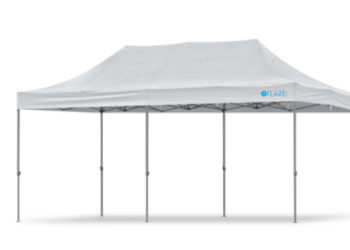2022’s Inflation Reduction Act (IRA) has brought significant change in the way renewable energy projects are incentivized. Among its many provisions, one that stands out is how the bonus tax credit has been linked with domestic manufacturing. The IRA domestic content requirements benefit those energy developers who source from within the country by offering a 10% boost in Investment Tax Credit (ITC) or Production Tax Credit (PTC). Compliance with these requirements can be complex but doable with a smart, structured strategy.
Read on for tips on how to navigate through the IRA domestic content requirements and ensure compliance.
1. Learn the Fundamentals of the Bonus Credit
A project is eligible for the bonus credit if it meets certain IRA domestic content standards in terms of steel, iron, and manufactured products. Understanding these basic qualifications is the beginning of getting your procurement and construction procedures in sync. Generally, this entails:
- 100% of the steel and iron content must be made in the US.
- A minimum proportion of total manufactured product cost must be domestic, 40% in 2024, rising to 55% by 2027.
2. Analyze the Components of Your Qualified Facility
Confirming your eligible facility under IRS Code Sections 45 or 48 is important. This might include solar farms, wind farms, or energy storage facilities. Once established, determine what exactly is a ‘component’ of that facility. According to Federal Transit Administration (FTA) definitions, components are items installed directly, such as solar panels, inverters, and racking systems. Subcomponents, say, wiring or fasteners, do not necessarily have to be counted at the same level of analysis.
3. Separate Iron or Steel and Manufactured Goods
The IRA domestic content standards divide facility parts into two categories:
- Iron/Steel Products: Need to be 100% American-made. Under FTA’s guidelines, this implies all manufacturing processes (except metallurgical refining) happen in America. If a product will be constructed ‘primarily’ of iron or steel, this high threshold applies.
- Manufactured Products: Here, the requirement is less stringent. At least 40% (expected to increase) of the overall cost of all manufactured components must come from US-produced products. What counts as a US-produced product is defined as following FTA’s manufacturing standards.
4. Use the Elective Safe Harbor Rule to Your Advantage
Released in May 2024, the elective safe harbor rule streamlines domestic content calculations. Rather than searching for precise actual costs from manufacturers, project developers may utilize IRS-specified percentage figures for typical solar and storage project materials. Companies can add up these percentages to decide whether or not the project is domestic content compliance without having to check costs individually.
This regulation strongly minimizes documentation requirements and enhances transparency, making it a critical approach in the fulfillment of IRA domestic content obligations.
5. Plan Around Solar & Storage Flexibility (While It Lasts)
Until the end of 2024, solar + storage projects were treated as one for purposes of compliance. This enables companies to certify the whole project for bonus credits while fulfilling only one side (solar or storage) of the domestic content requirements. Beginning in 2025, though, each technology type must qualify on its own under the domestic content thresholds to be eligible.
In order to optimize credits under the existing regime, certain companies chose to start work in 2024. This can be achieved through the following two approaches, which enable companies to lock in the existing rules, even though installation may be made later.:
- The Physical Work Rule (commencing major work on-site)
- The 5% Rule (incurred on at least 5% of the overall project expense)
6. Apply FTA Guidance to Estimate US Origin
For products that are manufactured, a product would qualify as US-produced if all the components are of domestic origin and the process of manufacture involves adding value to make it a new product. This clarification is taken from 49 C.F.R. § 661.5 and § 661.3 and must be your reference for determining each component. For instance, a solar inverter produced and built wholly in the US from home-grown components would probably qualify under the requirement, while one simply put together here from imported parts may not.
7. Be Audit and Documentation Ready
Even with safe harbor in place, you’ll still need to justify your compliance. Keep accurate records of procurement invoices, manufacturing locations, and component certifications. Especially for projects outside the safe harbor tables or involving custom configurations, thorough documentation will be essential to prove compliance with the IRA domestic content requirements during audits or reviews.
8. Keep Track of Legislative and Regulatory Changes
The IRA domestic content rules continue to develop. For example, there was speculation about a potential wafer requirement in final rulemaking to cap tax credits for US suppliers and prevent Chinese imports.
Firms ought to monitor IRS news, particularly any revised information issued in 2025 that could change what is included in compliance. Initiating a project in 2024 and then finishing it within 90 days of new guidance could provide tactical protection under present guidelines.
9. Consult with Experts and Stay Flexible
The ultimate advice from the Treasury may resolve many of the current uncertainties, but in the meantime, flexibility and professional advice will be of great help. Collaborate with experienced consultants who have in-depth knowledge about the FTA’s Buy America regulations, and plan for adjustable procurement tactics within your project schedules so you can adapt to new rules without hesitation.
Wrapping Up!
Compliance with IRA domestic content requirements doesn’t have to be daunting. By dividing it into manageable steps, understanding your components, utilizing safe harbor calculations, starting construction early, and planning based on upcoming regulatory changes, you can set your renewable energy projects up to take advantage of significant tax incentives. Uncertainties are there, but a structured, informed approach will work wonders toward having your project compliant and fiscally optimized.







